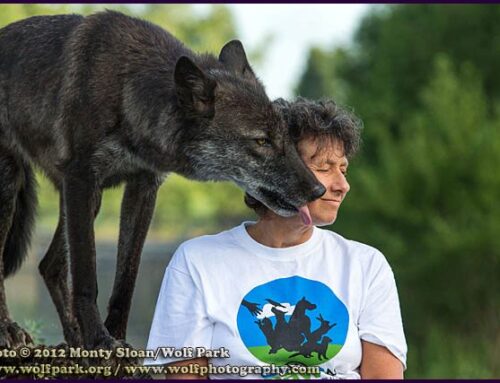Scientists who have studied fear in animals have come up with four responses, one or more of which are common, in one form or another, to organisms ranging from bacteria to humans.
1. Withdrawal, avoidance, flee
2. Immobilization, freeze-up
3. Submission, appeasement
4. Aggression
When working with our fearful dogs it’s important to keep in mind that these responses do not necessarily indicate the ‘level’ of fear a dog is experiencing. It is not unusual to hear people say that their fearful dog ‘lets’ people pet him/her. ‘Letting’ something happen does not mean that the dog is not afraid, it is just that for that dog, in that situation the dog is reacting with option #2. They are still afraid, in fact they may be horrified, but because they have not reacted with options 1, 3 or 4 their owners assume that they are ‘ok’.
At a seminar I suggested that people reward their dog for avoiding what scares them. A participant asked, “But isn’t that feeding into the fleeing?” Let’s just think about it-
When working with a fearful dog we typically set our sights on getting the dog closer to the things that scare them. That is how we are gauging success, and it makes sense, but the devil is in the details. We know that aggression is one of the responses common to feeling threatened, and as handlers or owners of fearful dogs it’s the one response we want to avoid at all costs. A fearful dog who cowers in the corner is likely to be allowed to live in that corner longer than a dog who responds aggressively. Moving away from something scary keeps both the dog, and whoever or whatever the scary thing is, safe. You won’t get bit by a dog who runs away from you (though I still wouldn’t turn my back on them!).
Whether or not we give a dog who has moved away from a trigger (scary thing) a piece of cheese (or other high value food reward), the distance gained is rewarding to the dog. If the dog is able to eat the cheese we are not only addressing their behavior but how they ‘feel’. Eating cheese makes dogs feel good. And if they are a safe distance from the trigger the dog may start to have more positive feelings than they do negative ones. Call it the Ben & Jerry’s effect if you like. This is the first step in helping a dog learn to be anywhere near a trigger and feel better about it. It’s the dog who decides what the appropriate starting distance is.
Studies of brains have shown that aggression is ‘rewarding’, which is obvious when you consider that hockey and boxing probably wouldn’t exist if it wasn’t. Put a dog in the position to respond aggressively and you are flagging a neural network in their brain you do not want them to learn to like.
Check out this video of a chameleon responding to a perceived threat. I don’t know enough about the ethology of these creatures to know if any appeasement behaviors were offered, but you can see what happens when withdrawing, freezing and threatening gestures don’t work to keep the scary technology away. You might want to turn the sound down on your computer. The following video was obviously NOT produced for educational purposes.[youtube http://www.youtube.com/watch?v=8pXZgpTSurc?rel=0]





